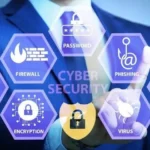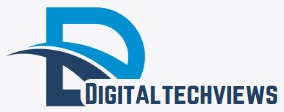In an era where digital technology seamlessly blends with every facet of our lives, the legal realm is no exception. Today, we’re diving deep into the fascinating world of legal animation services, a revolutionary tool that is transforming legal presentations and courtroom strategies. This isn’t just another tech trend; it’s a game-changer for attorneys and clients alike, making complex legal concepts easily understandable and highly persuasive.
The Magic Behind Legal Animation Services
At first glance, the term “legal animation services” might conjure images of courtroom dramas with high-tech displays. However, it’s much more profound and impactful than mere visual flair. Legal animation services offer a dynamic way to illustrate legal arguments and evidence, transforming abstract concepts into tangible visuals. This innovative approach is not just about making things look good; it’s about making them clear and comprehensible.
Breaking Down Complex Legal Jargon
- Simplifying Complex Information: Complex legal matters often involve intricate details that are hard to grasp. Legal animations break down these complexities into digestible visual stories, making it easier for judges and juries to understand and retain critical information.
- Enhancing Persuasiveness: A well-crafted legal animation can significantly impact the persuasiveness of your argument. By visualizing the sequence of events or demonstrating how an accident occurred, animations can sway opinions and reinforce your case’s credibility.
- Bridging the Communication Gap: Not everyone speaks “legal-ese.” Law animation services bridge the gap between legal professionals and laypersons, ensuring that the key points of a case are accessible to all courtroom participants.
The Creative Process: Crafting Law Animation
The creation of law animation is an intricate dance between legal expertise and creative storytelling. This process involves several key steps, each requiring a meticulous blend of legal knowledge and artistic skill.
- Initial Consultation: The journey begins with a detailed discussion between the legal team and animation experts. This stage sets the groundwork for the animation, ensuring it aligns perfectly with the legal strategy.
- Scripting and Storyboarding: Next, a script is developed, outlining the narrative flow of the animation. Storyboarding follows, sketching out the visual sequence, ensuring the animation will convey the intended message effectively.
- Design and Animation: With the blueprint in place, designers and animators bring the story to life. Using cutting-edge software, they create compelling visuals that highlight the crucial aspects of the case.
- Review and Revision: The draft animation is then reviewed by the legal team. This collaborative effort ensures accuracy and effectiveness, with revisions made as needed to perfect the final product.
The Spectrum of Legal Animation Applications
Legal animation services are not a one-trick pony. Their applications span a wide spectrum of legal scenarios, each with its unique challenges and requirements.
- Accident Reconstruction: Perhaps the most common use of court animation, reconstructing accidents or crime scenes visually helps jurors understand what happened, beyond the confines of verbal testimony.
- Medical Procedures and Injuries: Animations can also elucidate medical procedures and injuries, providing a clear visual explanation of medical issues related to a case.
- Patent and Intellectual Property Cases: For cases involving patents and intellectual properties, animations can demonstrate how a device works or how an invention is unique, aiding in the protection of intellectual assets.
The Impact of Lawyer Animation in the Courtroom
The introduction of lawyer animation into the courtroom has been nothing short of revolutionary. Its impact can be seen and felt in several key areas:
- Increased Comprehension: Visuals are processed by the brain faster than text, leading to higher retention rates. Animations make complex legal information more accessible and memorable.
- Emotional Engagement: Effective animations can evoke emotions, making the jury more empathetic to the presented viewpoint. This emotional connection can be a decisive factor in the outcome of a trial.
- Efficiency and Clarity: Animations can convey in minutes what might take hours to explain through verbal testimony, saving precious time and eliminating confusion.
Navigating the Challenges: Ethical Considerations and Admissibility
While legal animation services offer numerous benefits, they also come with their set of challenges. Ethical considerations and admissibility are at the forefront of these concerns.
- Accuracy and Fairness: Animations must accurately represent facts without misleading or biasing the jury. Ethical guidelines ensure that animations serve as fair and objective evidence.
- Admissibility in Court: Not all animations will automatically be admitted as evidence. They must pass legal scrutiny, demonstrating relevance, accuracy, and that they do not prejudice the case’s outcome.
Conclusion: The Future of Legal Animation Services
As technology continues to evolve, so too will the capabilities and applications of legal animation services. These tools are not just about bringing a “wow” factor into the courtroom; they’re about enhancing understanding, efficiency, and justice. With their ability to break down complex legal concepts into comprehensible visuals, legal animations are set to remain a staple in legal proceedings.
The journey into the world of legal animation services reveals a landscape where law meets art, complexity meets clarity, and where the pursuit of justice is enhanced by the power of visual storytelling. As we look to the future, one thing is clear: legal animation services will continue to illuminate the path towards more understandable, persuasive, and effective legal communication. In this light, the integration of technology like lawyer animation into legal practices isn’t just an option; it’s becoming a necessity for those aiming to lead in the courtroom of tomorrow.







